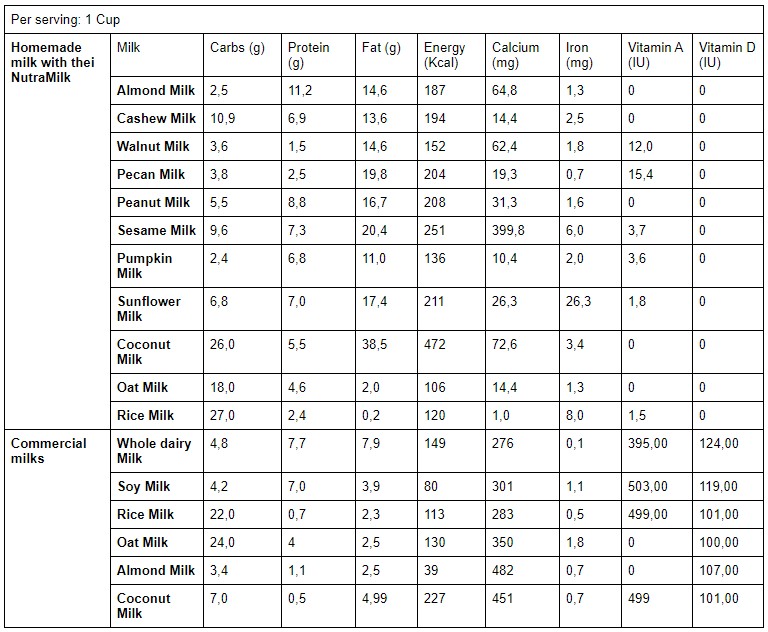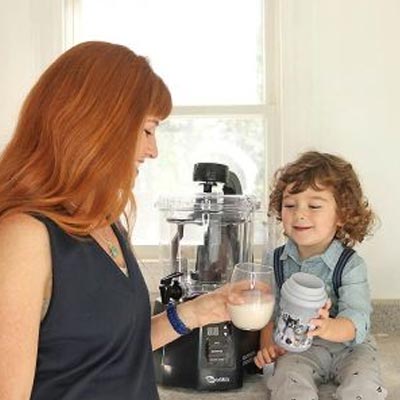Milk is the most common food that causes allergy in infants and young children and one of eight foods that are responsible for 90% of childhood allergies. The other seven are eggs, peanuts, tree nuts, soy, fish, shellfish, and wheat. It affects about 2%-3% of those younger than 3 years old. Many kids outgrow it, but some remain allergic for a lifetime. Even breastfed babies could have this allergy as a mother who drinks cow's milk can transfer the alpha S1-casein and whey protein to her child through her breast-milk.
What is a milk allergy?A milk allergy is an immune reaction to one of the many proteins in animal milk. It's most often caused by the alpha S1-casein protein in cow's milk. It is sometimes confused with lactose intolerance because they often share symptoms. However, lactose intolerance is completely different from a milk allergy, it occurs when a person lacks the enzyme (lactase) to metabolize lactose - a milk sugar - in the intestines. Symptoms: some symptoms include - wheezing, stomach ache, vomiting, diarrhea, rashes/hives and itchy, watery, or swollen eyes. If you suspect your child could have a milk allergy, it's important to speak with your pediatrician and or dietitian to help guide you in finding the best alternative for your child. For infants (under 1 year old), unless they are breastfed, it's crucial that they consume a hypoallergenic formula that delivers all necessary nutrients for growth and development. Children over 1 year old can obtain nutrients from other alternative milks as well as other foods. |
 |
What alternative options exist?
First, we must understand why it's recommended that kids drink milk. Dairy milk provides a convenient source of energy, protein (8 grams per serving), fat, calcium and vitamin A and D.
Replacing cow's milk with one of the plant-based milks and assuming it's fulfilling the nutritional requirements could lead to health complications in the long run. We want to make sure we get the nutrients that are commonly obtained from dairy from an alternative milk or other food sources.
Let's take a look at some of the common alternatives being used.
See chart below for a nutritional comparison of the different milks.

- Soy milk: Soymilk is the highest in protein. It's the only commercial milk that´s comparable to cow´s milk, but contains little calcium so it is usually fortified. Soybean crops are often heavily treated with pesticides, so an organic product is preferred. There is also an ongoing debate among researchers about the effects and presence of isoflavones in soy products and the possibility that they could disrupt the hormonal development of young children. This is why many professionals do not recommend soy for children while others do, as there is no conclusive evidence.
- Rice milk: Does not offer many nutrients and needs to be fortified. It's the lowest in protein and tends to be higher in sugar. However, it's the least allergenic of all the alternatives. You can make at home and fortify yourself.
- Oat milk: Does offer some protein, about 4 grams per serving. However, it's one of the highest in sugars (primarily composed of carbohydrates).
- Almond milk: Is one of the most nutritious based on the health benefits and contents in almonds themselves (they are rich in many vitamins, especially vitamin E, minerals and antioxidants). The fat content is mostly monounsaturated fats (heart-healthy) compared to saturated fats that make up dairy milk. In commercial milks- the actual amount of almonds used by companies to make the beverage is varied but mostly low due to the nut's expensive cost. It is impossible to know, therefore, how much of the final product will contain the almond nut benefits. They are usually very watered down which is why they are low in calories and they are fortified as well. Making homemade milk is a totally different story. You get to choose how many almonds and water you use and make a more nutritious, fuller bodied and flavored milk or a less bodied, diluted, low calorie milk. Our simple recipe provides the nutrition of 30 almonds per glass; a milk with a good amount of energy, plant-protein (11.2 gr per serving) and healthy fats as well as a load of vitamins, minerals and antioxidants. The fiber content is left behind and so is the phytic acid due to the NutraMilk's machine process - this is good news for children under 2 since it's recommended they don't consume too much fiber.
- Coconut milk: is a source of fat and energy. However, it offers little else.
- Hemp milk: (a newer alternative milk) has a good amount of plant-protein (6.6 g per serving), healthy fats, iron, magnesium, phosphorous, and vitamin E. It's high in anti-inflammatory omega-3 fats. A single serving of hemp milk provides an entire day's recommended intake of omega-3 fats. That's about four times as much as you'd get in soy milk and six times as much as you'd get from cow's milk. It is also well tolerated for people with soy, dairy, or tree-nut allergies.
The problem with these alternative commercial milks is that they are full of additives to flavor and preserve them as well as added sugars and sodium. They are not natural sources of calcium and vitamin A or D, so they have to are fortified.
So, why not make your own milks at home and fortify them yourselves? Now with the NutraMilk it's hassle free and fast.
You avoid the preservatives and added sugars- you have complete control of the ingredients you add; you can find a good quality vitamin an or mineral powder supplement and fortify the milk; and change it up when you want, flavoring milks differently or changing the nut, seed or grain to get variety of nutrients in your child's diet.
Other MilksThere are other plant-based milks to explore that have not become popular yet - you may not find them in the grocery isle but now with the NutraMilk, you can easily make:
|
 |
Some kids who are allergic to dairy milk could be allergic to other foods. By switching to one of theses alternative milks, you could be trading one allergic reaction for another. Tree nuts such as almonds (along with walnuts, cashews, and pecans) are at the top of the list of allergy offenders. In addition, nearly half of people allergic to peanuts are allergic to tree nuts. Of course, this is not always the case and many kids are simply just allergic to cow´s milk so you have to explore.
Where else can we get the nutrients that dairy milk provides
Just a few examples:
- Protein: eggs, meats. Vegan options: legumes, tofu, quinoa, nuts and seeds. Plant protein is not the same quality as animal protein since it does not contain all the necessary essential amino acids. If you do not consume any animal protein, make sure you get enough protein from other plant sources and make sure you are combining foods or eating a wide variety of foods to get all essential amino acids.
- Calcium: fortified foods such as juice, tofu (soy - not always recommended for children), sesame seeds, collard greens/cabbages. Grains, nuts, seeds and vegetables that may not be super high in calcium still contribute to your overall intake.
- Vitamin A: egg yolks, butter. Vegan options: winter squash, sweet potato, carrots, dark leafy greens, dried apricots, broccoli.
- Vitamin D: Sunlight by far is the most important source of vitamin D. Fortified beverages such as juices or milks. Cod liver oil, sardines, salmon, eggs.
If your child has a dairy allergy or you simply want to avoid dairy for other reasons, there are different options to replace the nutrients that dairy provides in our traditional diet. The NutraMilk gives us access to easily make new alternative, healthy plant-based milks that offer important nutrients and can also be fortified with the missing nutrients (calcium, vitamin A, D) if desired. These nutrients can also be obtained from other food sources as listed above. It's a good idea to consult with your pediatrician and/or dietitian to make sure your child is eating a healthy and balanced diet for optimum growth and development.
